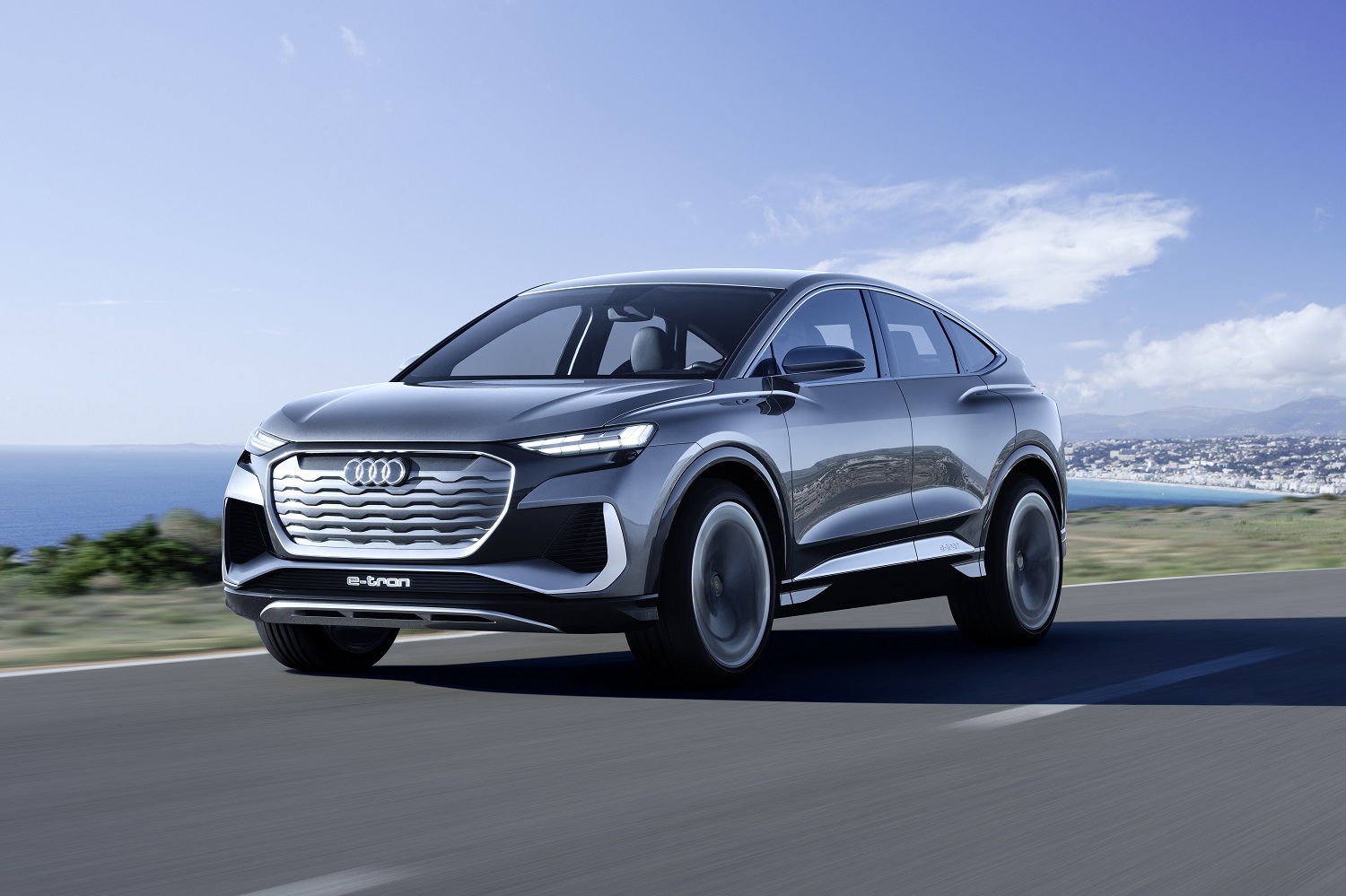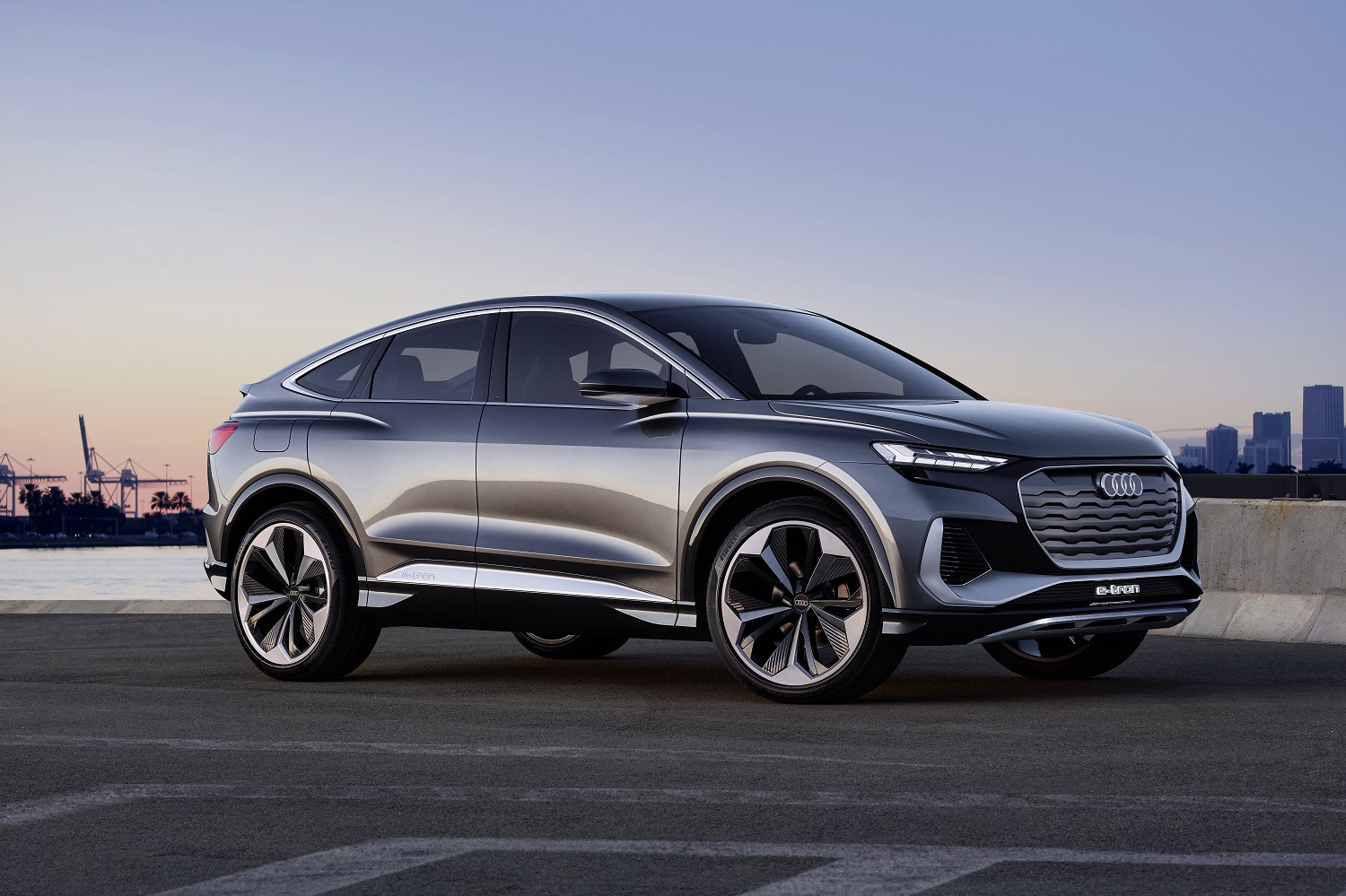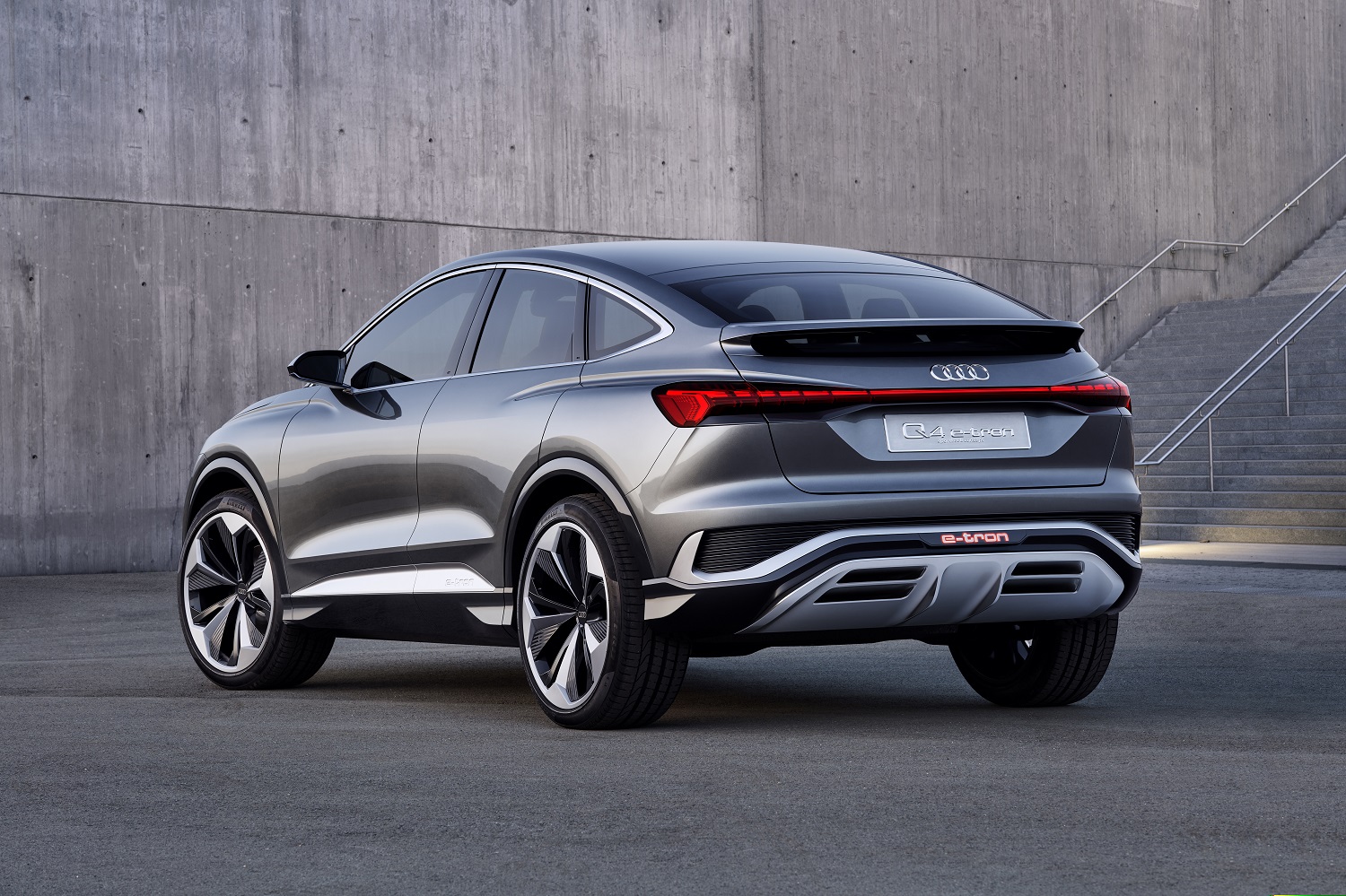Audi’s plan to launch more than 20 electric cars globally by 2025 is definitely ambitious, but it’s also realistic, and the models that will help it achieve its goal are gradually coming to light. One is a close-to-production concept named the Q4 Sportback E-Tron that’s closely related to the Q4 E-Tron introduced at the 2019 edition of the Geneva Auto Show.
Normally, I would have been able to enjoy an in-person look at the Q4 Sportback E-Tron during an auto show — but shows in Geneva, Detroit, New York, and even Paris were canceled due to the ongoing COVID-19 pandemic. The unveiling took place online, which is the new norm, and Audi design boss Marc Lichte tuned in to digitally present the concept.
What’s a Sportback?
Lichte explains it best. “In a Sportback, the difference is always the superfast roofline, and the rear-end,” he pointed out. Audi’s newest concept car is very close to the aforementioned Q4 when viewed from the front, but its roofline peaks right above the driver and sharply slopes toward a rear fascia dominated by horizontal lights. The end result looks like a fastback on stilts, and it’s reminiscent of the E-Tron Sportback that’s already available.
There’s more to the design than a coupe-like roofline, according to Lichte.
“The Singleframe grille has been Audi’s most famous styling cue for many years. In our combustion-engine cars, it’s black because it’s in front of the radiator. We wanted everybody to recognize from far away that the Q4 is an Audi, but we also wanted them to see it’s an E-Tron,” he explained during the digital press conference. His team didn’t want to get rid of the grille altogether, so they turned it into a trim piece that helps shape the Q4’s visual identity.
Looking at either side of the grille reveals one of the Q4’s most attractive features. Its headlights feature LED accents, which is hardly unusual, but buyers will be able to select their own unique daytime running light pattern. While this hasn’t been confirmed, it wouldn’t be surprising if the graphics can be customized using either a smartphone application or the in-car touchscreen, and changed via an over-the-air software update.
What’s it like inside?

The 12.3-inch touchscreen is tilted toward the driver, and it’s the central component in a fully digital interior. Audi added a second, driver-configurable screen that replaces the instrument cluster; it’s an evolution of a technology found in a vast majority of models Audi sells in 2020. Information about the car and its surroundings (like the current speed and navigation directions) is also displayed on a large, augmented-reality heads-up display.
Lichte said making the Q4 electric allowed exterior stylists to extend the wheelbase (the distance between the two axles), which in turn helped interior designers carve out an unusually spacious cabin. This creates a relatively compact vehicle with the leg room you’d normally find in a much larger model. Lichte’s team tweaked the exterior proportions accordingly to avoid ending up with a crossover that looks like CatDog on wheels.
What makes it go?

Like the Q4 concept, the Sportback is built on the extremely flexible MEB architecture developed by parent company Volkswagen specifically to underpin electric cars. It’s a version of the platform found under VW’s ID.3 hatchback sold in Europe, as well as the ID.4 crossover expected to make its debut in the coming months.
To put the term “flexible” into context, keep in mind that the same basic technology is found under the ID.Buggy concept I drove in 2019.
The powertrain consists of a pair of electric motors (one for the front axle, and one for the rear) that join forces to develop 301 horsepower. There is no mechanical connection between the front and rear wheels, meaning the Q4 features a through-the-road version of Audi’s Quattro all-wheel drive technology. The company quotes a 6.3-second sprint from zero to 60 mph.
Most of the space between the axles is taken up by a 82-kilowatt-hour lithium-ion battery pack that holds enough electricity to deliver up to 279 miles of driving range. Alternatively, motorists who want to go further on a single charge can ask Audi to remove the front motor to create a rear-wheel drive, 310-mile version of the Q4. Either way, 125-kilowatt quick-charging technology zaps the battery with an 80% charge in about 30 minutes.
What’s next?

Some concept cars turn heads on the auto show circuit (or, considering that we’re in 2020, online) before spending decades stashed away in a dusty warehouse, or parked on a spinning display in a museum. Not this one. Although it won’t reach production as is, Lichte confirmed it will heavily influence a production model due out in 2021.
“It goes to production in about a year’s time. Next summer, the first cars will be in customer hands,” he announced.
When it lands, the Q4 Sportback E-Tron — a name that likely won’t change — will be positioned near the bottom of Audi’s growing range of electric cars. It will join the standard Q4, the E-Tron, the E-Tron Sportback, and the long-awaited production version of the E-Tron GT concept in showrooms. It’s too early for the company to provide pricing information, but buyers will be eligible to claim a one-time federal tax credit of up to $7,500.






